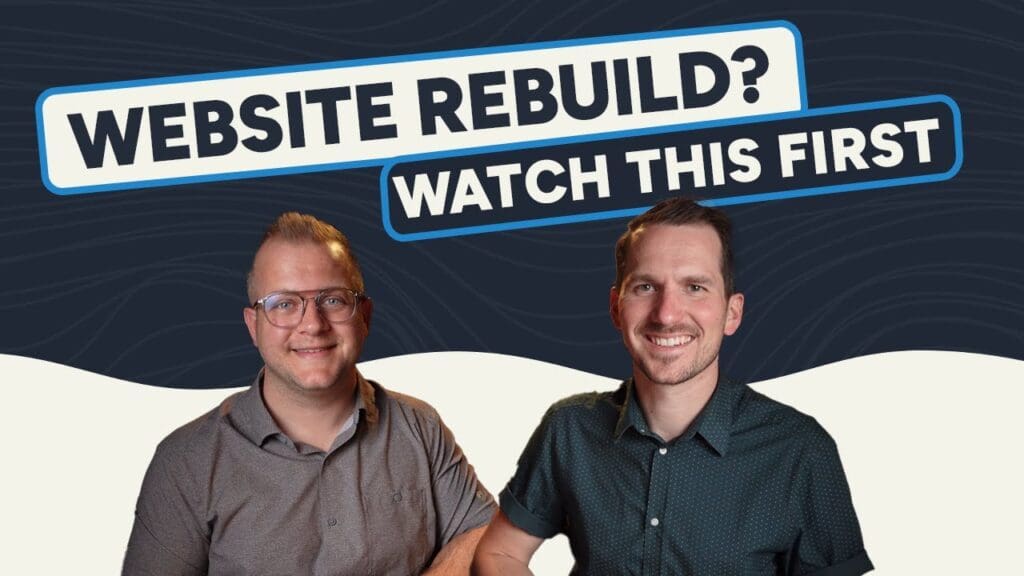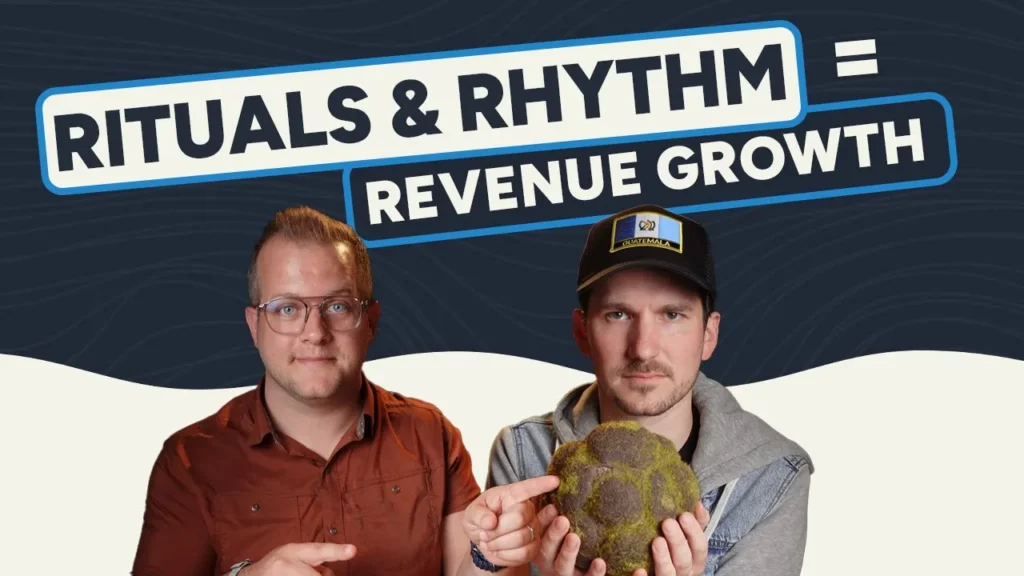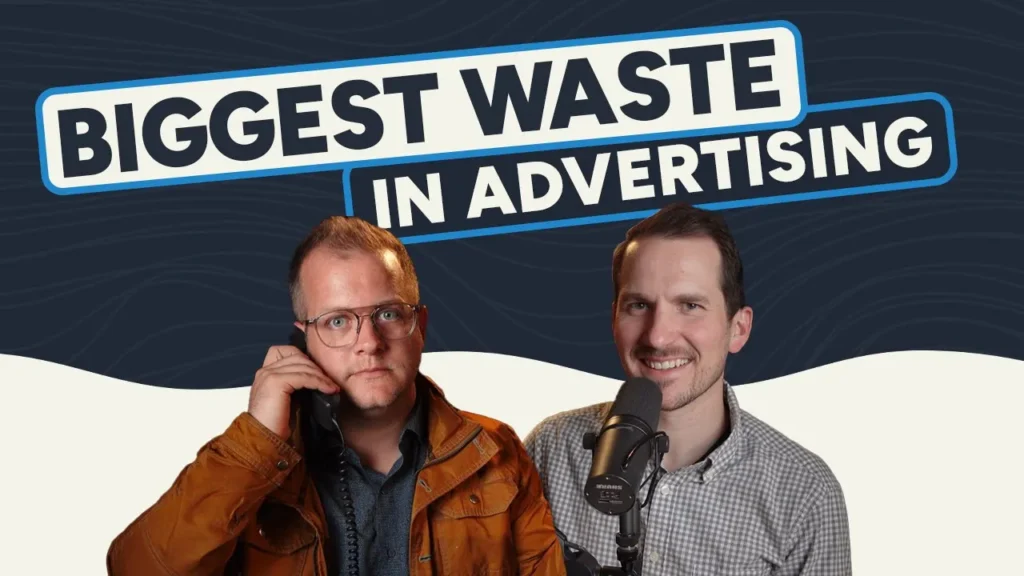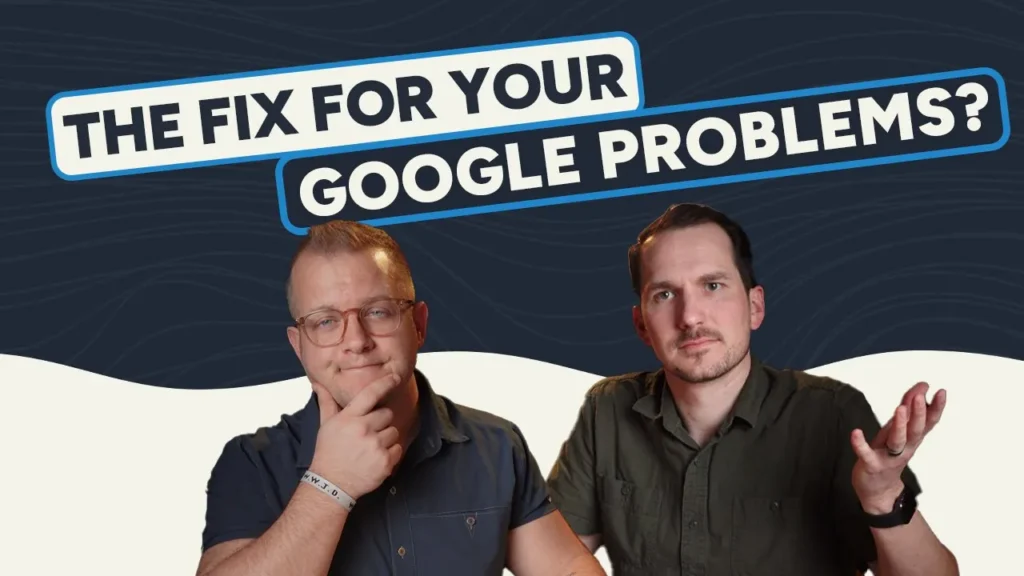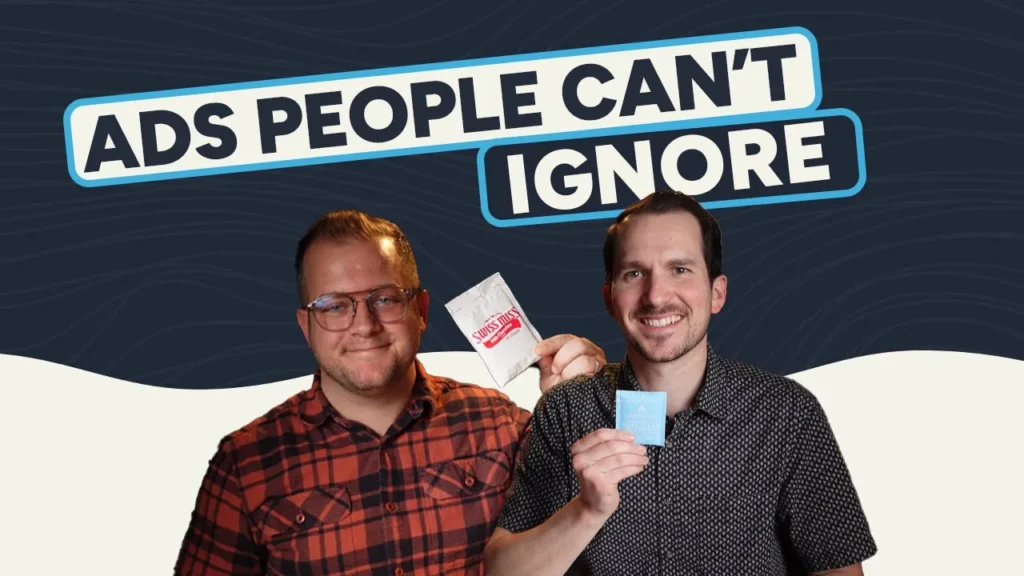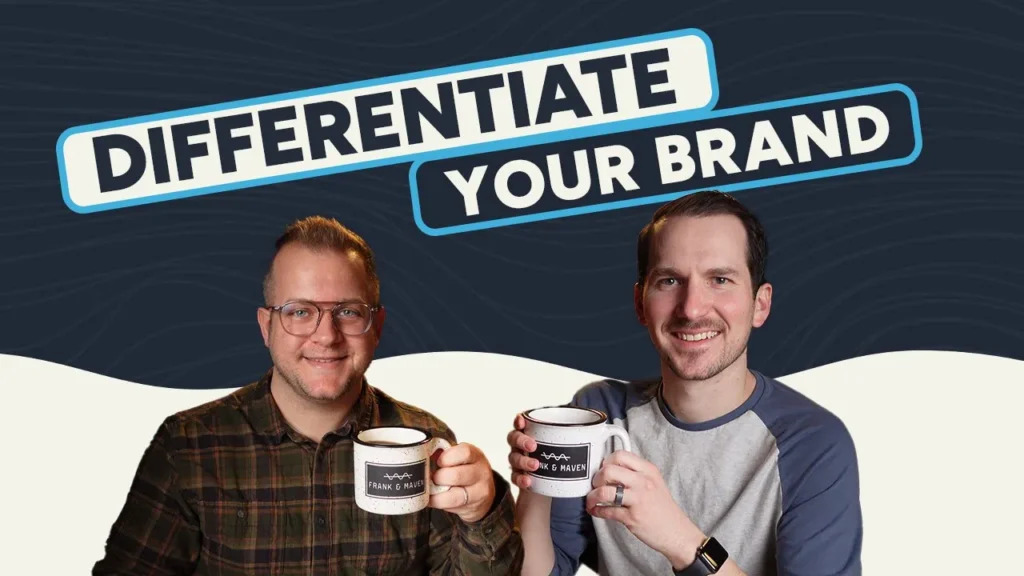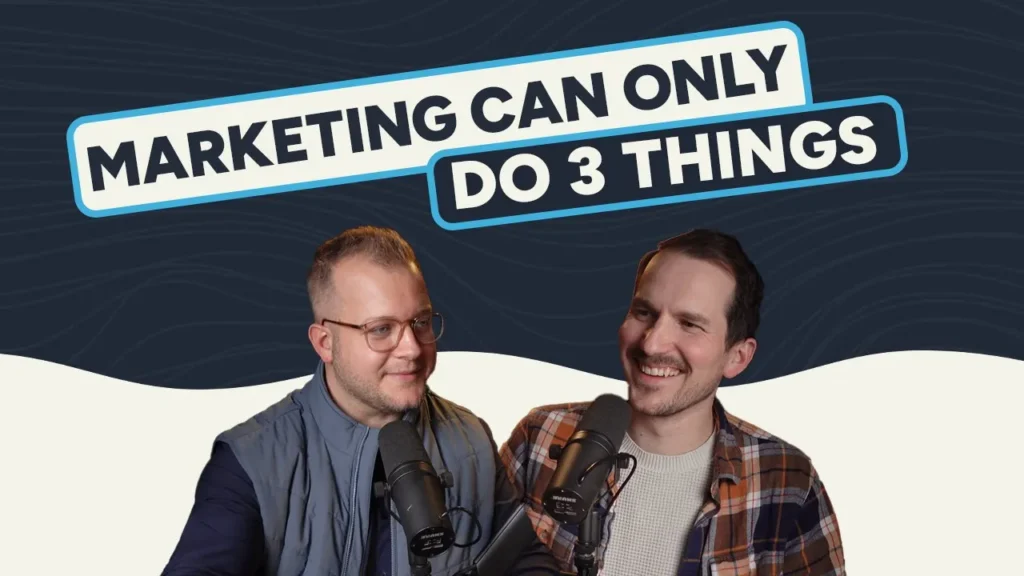Brandon Welch 0:00
Think this is what gets the little See More button pressed on Facebook. This is what buys the most expensive thing you could possibly buy, which is attention from the customer. Attention is the most expensive thing, and this is how you buy attention.
Welcome to the Maven Marketing Podcast. Today is Maven Monday. I’m your host, Brandon Welch, and I’m here for the second time with Leslie Joe Clark, aka the queen of concert set lists. She will take you to a concert, and she will go up front, and she will leave with an official set list. I’ve seen her do it. She got Joe Welch’s actual set list from the concert. We went to Google set list, probably
Leslie Clark 0:40
list, honestly, probably a dozen. It’s my party trick. I will get the set list. I will leave with a little treat. I love a concert.
Brandon Welch 0:49
So take take less than a concert. Just in case you didn’t remember, this is the place where we help you eliminate ways in advertising grow your business and achieve the big dream. And today is all about headlines that make ads sell more so that you can achieve the big dream, right? And we’re gonna eliminate waste and advertising in the process and grow some businesses. Yeah, thank you so much for being here. Of course, yeah, we think, as marketers, well, we need to write some ads, and the job of the ad is to sell the product. And that is partially true, but in order for the ad to sell, it has to first get read or paid attention to, and the job of the headline is to get the ad to be read or paid attention to. And so it’s actually not as much a product of just being abundantly creative as much as it is having a formula to disrupt human attention. Predictability is what gets ads ignored, but unpredictability along with a little bit of cunningness and a little bit of sudden alignment of truth, is what gets the rest of the ad read. And today, we have Leslie back, because she is absolutely not only the queen of set lists, she is the queen of headlines, Queen of copy, and she is just the most punchy writer that we’ve ever had inside spring and Maven, and I’m so honored to have you here. Thank you so much. Yeah, for bringing us your wisdom. So a few months ago, Leslie was challenged with teaching our team a little bit of her magic. And the thing about writing is that it’s very hard to teach, and she’s done a wonderful job with five tactics that are going to make even an average writer better, and you’re gonna be able to follow these. And so we’re just gonna jump right into
Leslie Clark 2:27
them. Yeah, absolutely. So first thing to preface headlines are the first impression of anything anyone’s seeing. And this could be a headline at the top of your website. This could be a headline on a Facebook ad. This could be an email subject line, but these are just five methods for a process that I fall back on when I don’t have the gas in my tank anymore. I’m not feeling very creative. This is a process that I teach to all of my friends that meet me and say, I’m not creative. How do you do it? It’s all formula. You gotta have something to fall back on when you like I said, just don’t have that gas in the tank. Leslie is that friend? Yeah, absolutely. So we’ll just go ahead and jump right in. Method number one is called Writing in opposites. And the concept of writing in opposites is juxtaposing two contrasting ideas in a way that highlights how they’re different and creates a very punchy, memorable impact. You’ve heard 100,000 of these. This is a method that Apple really leans into. Heavy. Some examples, light in your backpack, heavy on features, mega power, mini sized.
Brandon Welch 3:28
I’ve seen those. I’ve seen that tactic at play. Yeah.
Leslie Clark 3:31
So it’s really niche and down on the opposites, mega, Mini, light, heavy. So the steps on how you write like this step number one, you write down all of the features you’d like to highlight. Let’s workshop it live. Right if I’m writing down features for a roofing company, I might want to focus on how fast I can get in to get your roof put on, or how fast my follow up is, or that I’ll give you a price right away. That’s kind of what I mean by you write down the features you’d like to highlight, what’s the topic that you’re niching down on? So
Brandon Welch 4:00
you might have fast, you might have clean, you might have easy to work with. Yeah, quick on response, slow on pushiness. Yes, exactly.
Leslie Clark 4:10
So you find your one key feature, and then you just find a funny, clever opposite to that, if it’s if it’s fast to respond, slow to let you down, something like that. Yeah, yeah.
Brandon Welch 4:21
What if we were to do this with Frank and Maven? You might have big results, smaller spend. Yeah, that’s such a good one. Yeah, we often are known. We’re actually reducing a marketing budget and making it more effective. Like, that’s a thing we have a track record of doing. Yeah. Nate, the camera guy, I might add, would be quietly working, loudly producing.
Leslie Clark 4:45
I love it, absolutely. That is right. And opposites, paired
Brandon Welch 4:49
opposites. Slim payment, bat data
Leslie Clark 4:52
plans, yeah, yeah. Modest price, mighty speed.
Brandon Welch 4:55
There you go. Yeah, yeah. So take, I love this tactic, because literally anybody can do. It, I would just write a line down the middle of the paper and write all the positive things about it and all the negative things about it, yeah, or the negative things about the category, and then the positive things that the product divides. And then you’re going to see two that just within a couple of minutes line
Leslie Clark 5:13
up. Real easy, yeah. My first caveat to any of these methods is, do not overthink it. Don’t cram it into a box that’s not meant to belong in if you’re having too much trouble, move on the minute you start to overthink. It is the minute the whole process kind of tanks. This is meant to be a brainless operation, a brainless way to write creative Yes. So
Brandon Welch 5:31
somebody stops and they go, Wow, I’ve never heard it said like that. That’s disrupting that predictability that we’re trying to get to, right? Yeah. So tell us another way. Tactic number two for disrupting predictability. Tactic number two
Leslie Clark 5:44
is my personal favorite. It’s called the mullet. This is business message in the front, party in the back. And the steps to this are step number one, say what you need to say, simple and then add a little smile. So a couple, a couple examples that I’ve got for you guys today, everything must go except for Janet and billing, she stays or made from an old recipe, yeah, made from an old recipe that we stole from an old family.
Brandon Welch 6:11
Yeah. So this is probably easy enough for people to do on the front end, because the front part of this is actually boring. This is the ad speak that gets most writers in trouble. Yeah, they say 105 years of experience, but that would be the business in front. That would be the 106
Leslie Clark 6:27
years old. Yeah, yeah. You know, yeah, 105
Brandon Welch 6:31
years of experience. We have 4715 year olds working.
Unknown Speaker 6:36
Yeah? So
Brandon Welch 6:37
I love that, because it’s just so simple. Just say the thing that you were probably gonna write if you were an you know, skilled ad writer, and then take a minute to be goofy. Yeah, and then, yeah, go have a walk. Go, I don’t know. I would probably talk to my six year old, yeah, get some of that energy side. Little tactic here, go absorb something funny. Go watch favorite sitcom, go listen to a comedian. And then go take a nap, literally, go take a nap, come back around to come back around, wake up, and then what’s going to happen is you’re going to have this magic idea pop in your head. And that is, I think that’s what creative people do, somewhat accidentally, but you’re going to do that on purpose. So take a step to side. Little income tactic for the mullet. You have any other mullet? Do you have any other mullets to share with us?
Leslie Clark 7:19
No contracts. No kidding. Love that this bottle is made from 50% recycled plastic. We’re still working on the rest. Yeah. So, yeah.
Brandon Welch 7:29
So you have to have a permission to be have a little fun. So great. Yeah, the mullet number three, this might be my actual favorite tactic. I go. I use this one quite a bit, yeah, just naturally this next
Leslie Clark 7:41
method is called repetition. And repetition, repetition. You find your hero message and say it twice. A couple examples of this that everyone knows, 15 minutes could save you 15% or more on car insurance. Absolutely the best thing to happen to iPhone since iPhone this. This one is really, really popular. You’ll start hearing it everywhere now that you’ve heard me talk about it, but say it once, say it again. Dollar
Brandon Welch 8:07
Shave. Club was shave, time, shave, money. Love it, yeah, repetition,
Leslie Clark 8:11
yeah. So step one is determine the main idea that you want to communicate. Say, 15% Dollar Shave, yeah? Free installation, whatever that thing is,
Brandon Welch 8:23
free installation, free of hassles. I think, I think on one of our roofing clients, we say stress free, mess free. Mm, hmm,
Leslie Clark 8:30
yeah. So another couple examples, zero buffering, zero limits, zero worries, all the data, all the speed, all the time. Just latch on to that phrase and put a little cadence to it. Love
Brandon Welch 8:42
it. Easy enough, right? Easy to pick a word, repeat it and put another word after it. Yeah. Cool. Number four, twisting a popular phrase. Now, Leslie is the master at this one. Yes,
Leslie Clark 8:53
okay, so bear with me. Twist popular phrase is probably the most complicated of all of these methods, but it’s also the most brainless. It requires the least amount of thinking, the least amount of creativity. There is a true and tried formula to this method. You might
Brandon Welch 9:09
even be able to use AI to do this. Probably, yeah, you probably could. Most people are freaking out about, oh, I’m gonna have chat. GPT do all my ads for me. Now, that’s not gonna work. You did a formula and lean in the feet of the formula. Give me 20 others like this, show them what this is. Yeah, so it has disrupted you
Leslie Clark 9:25
when you twist a popular phrase. This is taking a phrase that people already know in their everyday lives. This is something that they’ve already heard, they’re already familiar with. It’s going to be really easy for them to hold on to and remember from your brand, because they know it outside of you. But you twist it and you make it your own. So a couple examples to illustrate what this sounds like. Create beauty like a beast, survival of the quickest love it first, second, third, fourth, fifth and sixth. Site. So it’s phrases that feel familiar. I
Brandon Welch 9:56
want you to just imagine you’re flipping through a magazine, or you’re flipping through. Facebook or you are dazed out on a commercial break, or radio, because everybody else will just throw an ad speak at you. They’re saying, combine years of experience and Come experience the difference and all these empty, meaningless, flaccid ad phrases, right? And then somebody comes along and says, survival of the quickest. And it’s like, Oh, I I almost your brain is always listening for a pattern, right? And when it once, it thinks that the pattern is a repeated pattern, that it knows it actually is. The mechanism inside our brains is like reducing our attention so that it can save energy. It saves strain in our eye muscles and our ear muscles and all the inner workings of our brain that give energy to processing thought. The brain actually wants to stop thinking about things that already knows. It needs to save energy for the new, exciting and different, right? Well, survival of the quickest we fit. We our brains filled in fittest before, because we’ve heard that a gazillion times. But you say quickest, you’ve surprised Broca, it’s the Broca’s area of the brain. So think about love at first, second, third, fourth, fifth and sixth. Site you’re you’re stopping. This is what gets the little See More button pressed on Facebook. This is what buys the most expensive thing you could possibly buy, which is attention from the customer. Yeah, absolutely. Attention is the most expensive thing, and this, this is how you buy Attention,
Leslie Clark 11:23
all right. So let me teach you how to do it. I’m going to actually workshop a live example when I teach this to you, step number one, you’re going to collect all of your brand words. Some people call this mind mapping, but I recommend grab a sheet of paper and a pencil and sit down and write about your brand. My example today is going to be, I’m going to sell you a stick of deodorant today, right? So whenever I think of deodorant, I think of sticky, hot, sweaty, fresh odor. Stick, smell vanilla, lavender. Any, any, yeah, any words that come to mind are relevant here, right? Yeah, write them down. Step number two is, you’re going to take all of those words that you’ve mind mapped, and you’re going to my favorite website for this is rhyme zone, but there’s a million different engines out there that will spit out rhymes back at you, but you’re going to find rhymes for all of the words that you have word mapped. I’m going to take sweaty for an example. Okay, so sweaty, ready? Petty, confetti.
Brandon Welch 12:23
Spaghetti, Richard Petty. Richard Petty.
Leslie Clark 12:25
Yeah, so you’re gonna find all of your rhymes. Write those down underneath your original mime. Spaghetti. Write down all of your words that you’ve mind mapped. And step number three is you’re going to look up idioms for all of these words. An idiom is a phrase that we know to have a meaning that means something different. For example, break the ice, spraying cats and dogs. That’s an idiom, right? Yes, a popular phrase, a popular phrase. And again, there’s different generators out there in the world for idioms, just like a idiom generator, not idiot generator, but idiom generator, and you’re going to put all of your rhyming words back into this calculator. So my examples were ready, putty, confetti, spaghetti, plug all of those words individually back in, and you’re gonna get popular phrases, quotes, idioms spit back out at you. So a couple examples. When I put in ready, yeah, are ready, willing and able, ready, set go, just phrases that we’ve heard, yeah. So then you’re going to take your original word, mine was sweaty that rhymed with ready that I put into Ready set go, you’re going to replace your brand words. So now it becomes sweaty, willing and able, sweaty set go. It just sneaks your brand word back into a popular video.
Brandon Welch 13:46
Love it. So that was the most simple breakdown of an extremely complicated thing. Most creatives that just come up with that stuff, their brains connect those patterns you just gave everybody who gets writer’s block keys out of that jail. That’s my hope. You did. I know that you did, because you’re finding a rhyming word, and then you’re thrown into a machine finding idioms that come up with that, and then you’re replacing your brand word with that word.
Leslie Clark 14:15
We’re trying to get over creative block here. Yeah, it happens to the best of us.
Brandon Welch 14:18
It really, really does. Yeah. And Leslie is, like, a bad, bad mama Jama when it comes to, like, banging out really good creative stuff. And this is, now we know how she does it. So yeah, thank you. There’s talent in there too. What you’re going to find out is this is just going to spark, if nothing else, it’s going to spark ideas that pull you out of cliche mode and pull you out of predictability. And that is the number one goal, right? 100%
Leslie Clark 14:43
Yeah. Another caveat here is you will come up with a ton of trash. Yeah? Write it down. Write it down. Don’t discard it because it doesn’t immediately sound good to you. Thoughts inspire thoughts. Inspire thoughts. Keep going.
Brandon Welch 14:56
Take a nap, yeah,
Unknown Speaker 14:57
come back to back to it, yeah. And
Brandon Welch 14:58
then next morning. The shower, because you’ve done all this work, like, three ideas are gonna hit you 100% and then I have this really weird thing that happens sometime early in the morning an ad I was working on three days ago. It’ll hit me early in the morning, and I’ll have to, I’ll write it down, and then later in the day, I’ll finish and chase that idea. So
Leslie Clark 15:16
mine is the minute I go to bed. Oh, that’s about, I know it’s a blessing and a curse. Yeah, we
Brandon Welch 15:21
all have our peak times, so we just need to let you off at noon and truly,
Leslie Clark 15:24
yeah, live my life and work at 1am we have one more tactic, yeah, guys, one more tactic for you today. This one is rhyming. Everyone loves a good rhyme. Everyone knows how to rhyme just repeating those similar sounds. So bounty, quicker picker upper. That’s bounty, right? Yeah,
Brandon Welch 15:44
quilted quicker picker upper. Is it okay? There’s one more rhyme in there that I you know, they need alliteration and rhyming. Yeah? Quilted quicker picker upper. Yeah, it’s awesome. See another popular
Leslie Clark 15:54
one that you guys probably know is beans. Means Heinz. That’s a good one, a good rhyming example. Yeah. And
Brandon Welch 16:03
reverse alliteration kind of because it’s got the Z, yeah.
Leslie Clark 16:06
You’re just trying to repeat that similar sound in there so that you can sink a little hook right into the brain, if you will, love it. Love it. Yeah. So step one again, mind map all of your brand words, anything that you might feel relevant to your service, your product, your brand, your colors, your anything relevant to you. Yeah, Mind
Brandon Welch 16:29
Map it and write it down. You can thank Frank.
Leslie Clark 16:33
And then I’m gonna, I’m gonna plug rhyme zone again. It’s rhyme zone.com that’s my personal favorite. Put all of those, words right back into a rhyming generator and just write everything down and see what starts to connect itself.
Brandon Welch 16:46
Love that you have any other examples for us for the rhyming part? Yeah,
Leslie Clark 16:53
a couple final examples. There I was writing a couple headlines for a car dealer. Shout Out Corey Bunger, but a couple headlines I wrote for him are a dealership without the gamesmanship, but that one was really fun and then guaranteed warrantied warp speed, ooh, rhyming headlines
Brandon Welch 17:13
that could go for a lot of people. Corey has another one. Corey the car cowboy has another one that we use a lot, selling cars like candy bars. Selling Cars like candy bars, putting dreams and driveways, yeah. Uh, isn’t that fun? Isn’t advertising more fun when you do things like this? Fun? Yeah, yeah. The sure way to get your ad budget wasted is to write predictable, cliche things. I think we all know that to be true, but yeah, we still do that. We still sit down and we go, oh, it’s our job to write an ad out. We better write an ad that sounds like an ad, yeah. And it’s like, no, take all of the hype and the polish out of it. Go on a journey. Be a five year old again. Make up words in the back seat in your mind, and when you need a little bit of spark to do that, Leslie’s tactics are going to save you. We’re going to write in opposites. Pick two opposite words and pair them together. We’re going to use the mullet business in front, fun and back. Say something regular and then say something funny. Yeah, yeah, the smart aleck remark to your business statement, right? We’re going to use repetition. We’re going to use repetition. Find your hero word and say it twice. We’re going to twist a popular phrase by taking a well known phrase and remixing it with a word from your brand. And then we’re going to use rhyming the most old fashioned fun word trick guys. These are going to make you money. These are going to make people like you. They’re going to make people trust you and lean into buying from you. When you put these on your website, when you put these in your emails, when you put these in your Facebook ads and your radio ads and your TV ads on your billboards, that’s what equals memorability. You’re disrupting predictability, and you’re replacing it with memorability. And Leslie, I’m so glad you’re here. Thank you. Teach us how to do that.
Leslie Clark 19:00
Yeah, I hope that these help. If you guys land on something awesome, shoot us an email. I’d love to hear what you come up with. Leslie
Brandon Welch 19:05
would love nothing more, and I would love nothing more than to see some of your headlines or your hooks. Send them in. We’ll either read them here and celebrate them, or if we think we can, we’ll maybe suggest some edits to them. I love it. Yeah, that’s Maven Monday at frankon. Maven.com We’ll be back here every week answering your real life marketing questions because marketers who can’t teach you why
Leslie Clark 19:27
are just a fancy lie. Have a great week.


